AI-Powered Heating For Microclimate Control
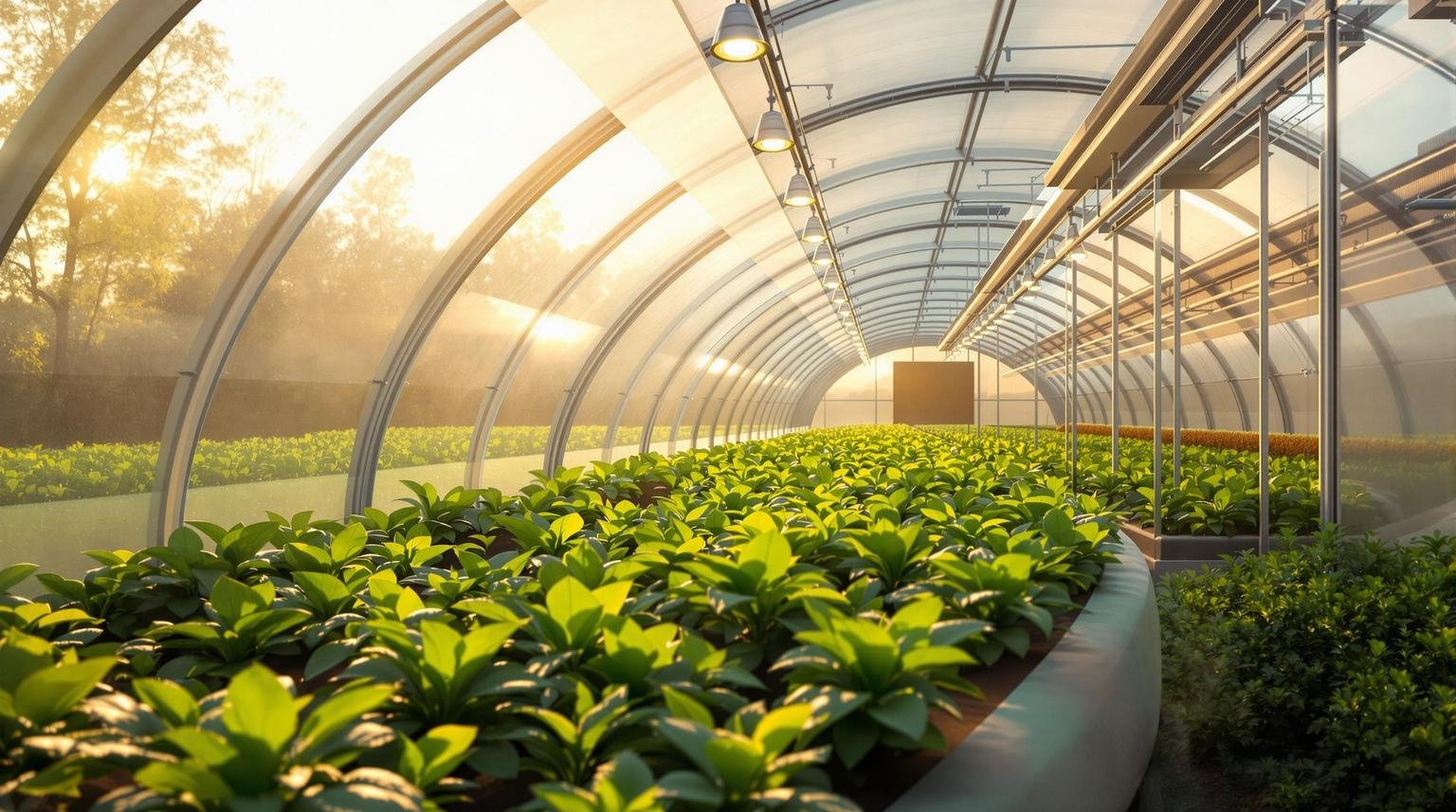
Want healthier plants and lower energy bills? AI-powered heating systems make it possible. These systems use sensors, predictive algorithms, and automated heating to create perfect growing conditions while saving energy. Here's what you need to know:
- Microclimate Control: Tailors specific conditions (temperature, humidity, sunlight) for plants to thrive.
- How AI Helps: Real-time adjustments, forecasts, and energy-efficient heating reduce costs by up to 57%.
- Energy Efficiency: AI cuts energy use by 15–20%, integrates with renewable energy, and lowers carbon footprints.
- Smart Tools: From radiant heating to geothermal systems, AI integrates with advanced tech for precise temperature control.
- Applications: Ideal for home gardens, commercial farms, and urban gardening, AI ensures plants thrive in any environment.
AI is transforming gardening by combining precision, efficiency, and sustainability. Whether you're a hobbyist or a large-scale grower, these systems simplify climate management and boost plant health.
Nature Fresh Farms - Maximizing Greenhouse Yield Using AI Powered by Intel


AI Technologies for Temperature Control
Modern garden heating systems owe their precision and efficiency to advanced AI technologies. These systems blend smart sensors, predictive algorithms, and seamless integration to provide energy-efficient temperature control tailored to your garden's unique conditions.
AI Sensors and Data Collection
At the heart of intelligent temperature control are AI-powered sensors that continuously monitor your garden's environment. These sensors gather detailed data from the air - such as light levels, temperature, humidity, wind, and CO2 - and from the root zones, including oxygen, moisture, temperature, and nutrient levels. What sets these sensors apart is their ability to interpret complex environmental patterns, enabling the AI system to make precise adjustments. For instance, if the sensors detect a drop in soil temperature paired with high humidity, the system can activate heating while improving ventilation to prevent moisture-related issues.
The global AgTech market underscores the growing reliance on such technologies. Valued at around $24 billion in 2023, it’s expected to more than double to $54 billion by 2029, with the AI segment alone projected to nearly triple to $4.7 billion by 2028. By combining data from multiple sensors across your garden, these systems provide a comprehensive view of environmental conditions, allowing gardeners to fine-tune their methods and boost year-round yields. This rich data collection is the foundation for predictive algorithms that optimize temperature control.
Predictive Algorithms for Climate Adaptation
Predictive algorithms take the guesswork out of garden heating by using both historical and real-time data to forecast temperature changes and adjust heating schedules. These algorithms can reduce energy consumption by more than 15% in monitored environments. Machine learning models, known for their ability to handle complex, nonlinear systems, play a key role in these predictions. In real-world applications, such systems have significantly lowered heating costs by optimizing energy use.
These energy savings are especially important when you consider that nearly half of the global energy demand for buildings in 2021 went toward space and water heating, with over 60% of this demand met by fossil fuels - contributing to 7% of worldwide energy-related CO2 emissions. By integrating these precise predictions with tools like AIGardenPlanner, you can create garden designs that make the most of your local microclimates.
Integration with AIGardenPlanner
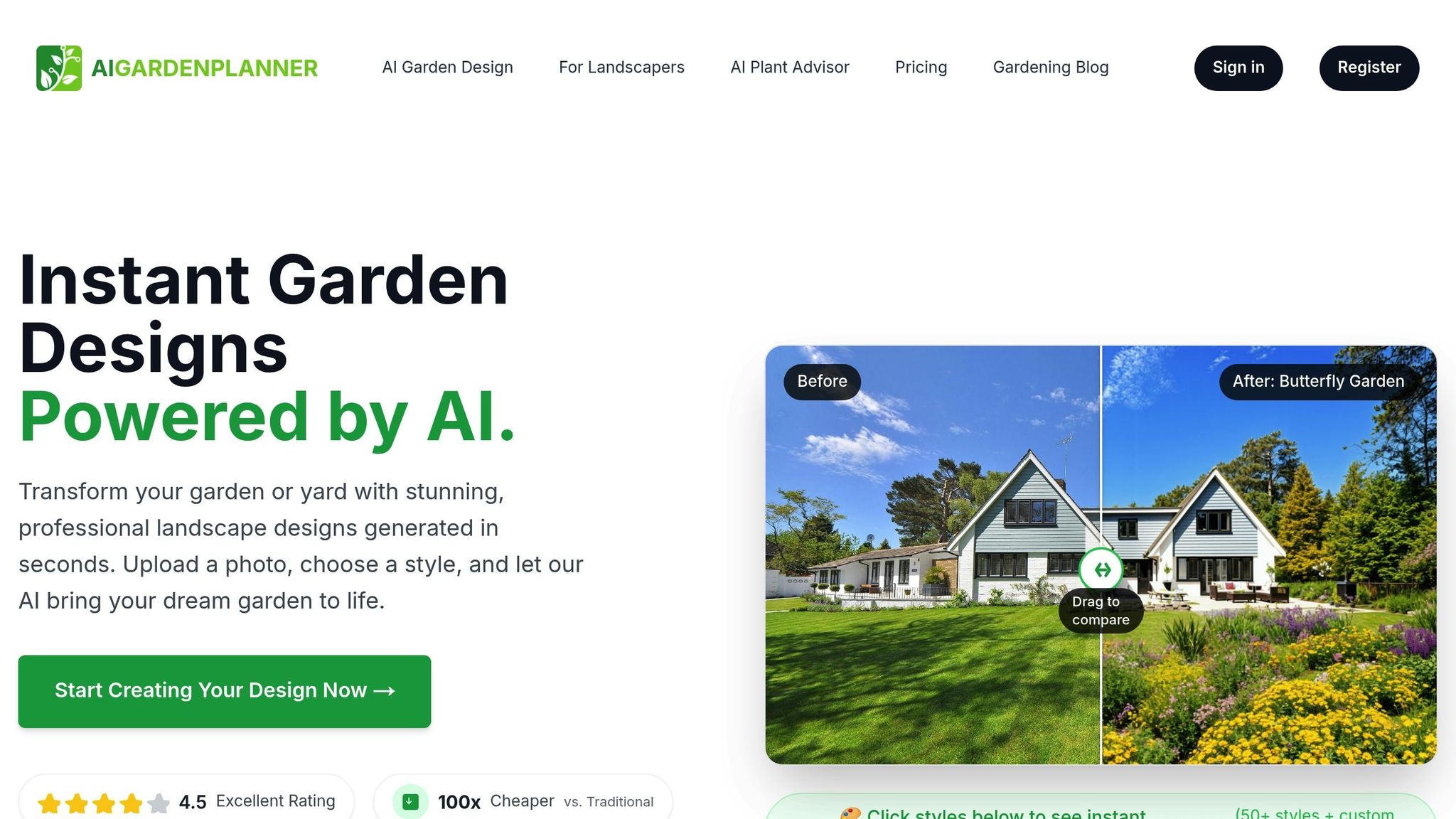
AIGardenPlanner takes the insights from sensors and predictive algorithms and turns them into actionable garden layouts. Its design tools analyze environmental data to optimize thermal management, suggesting plant placements that align with temperature zones, air quality, and microclimate potential. For example, the platform can recommend placing heat-loving plants in naturally warmer areas while positioning cold-hardy varieties in cooler zones, reducing the strain on your heating system.
This approach mirrors advanced systems like AI-GECS, tested at the Taiwan Agricultural Research Institute. AI-GECS integrates weather forecasts, microclimate data, crop indicators, and operational strategies to autonomously optimize greenhouse conditions, cutting water and resource use while boosting productivity - all at roughly one-tenth the cost of traditional systems. For home gardeners, AIGardenPlanner offers a similarly effective yet affordable solution, helping you design layouts that maximize the efficiency of AI-driven heating systems without compromising on results.
The collaboration between design and technology is key. By leveraging AIGardenPlanner to create thermally efficient garden layouts, you can reduce the workload on your AI heating system while improving overall garden performance. This ensures that your garden thrives in harmony with its environment, all while keeping energy use in check.
Energy-Efficient Heating Solutions for Gardens
After your AI system gathers data and predicts optimal conditions, choosing the right heating technology becomes essential for maintaining your garden's microclimate. A well-suited heating solution not only helps manage energy costs but also ensures precise temperature control for your plants. These technologies pair perfectly with AI strategies, allowing for real-time adjustments to create the ideal growing environment.
Radiant Heating Systems
Radiant heating systems provide a smart way to manage garden temperatures by delivering heat directly to plants and soil instead of warming the air. This targeted approach can cut energy costs by approximately 20–30% compared to traditional forced-air systems.
What sets radiant systems apart is their ability to distribute heat evenly. Unlike forced-air systems, which lose energy as heat circulates, radiant heating ensures consistent warmth across your garden. This uniformity is particularly beneficial when AI systems require stable conditions across different zones.
For greenhouses, radiant heating pipes can be strategically placed under benches, along rows of plants, or at gutter height to maximize heat distribution. This setup works seamlessly with AI controllers to maintain ideal temperatures while minimizing energy use.
Take, for example, the HeatTech 120V Electric Radiant Floor Heating Mat. Priced at $99.95 for 20 square feet, it’s a practical choice for home gardeners. With a 4.0 out of 5-star rating from 68 Amazon customers, users commend its ease of installation and reliable performance.
Besides reducing energy use, radiant heating promotes healthier plants by delivering steady warmth directly to the roots, where it’s most beneficial. If you’re looking for another sustainable option, geothermal systems are worth considering.
Geothermal Heating Technologies
Geothermal systems tap into the earth’s stable underground temperatures, offering a sustainable way to heat your garden. Across the U.S., underground soil temperatures average about 55°F year-round, providing a dependable base for climate control.
These systems are impressively efficient, with heating and cooling efficiencies ranging from 300–600%. In fact, geothermal heating is at least twice as efficient as leading air conditioners and nearly 50% more efficient than top-tier gas furnaces, regardless of the season.
There are two types of geothermal systems: active systems, which use heat pumps and are more expensive, and passive systems, which are simpler and more budget-friendly. For AI-controlled gardens, passive systems often provide the steady heat source that algorithms can easily manage.
Maintaining soil temperatures above 45°F also supports the growth of soil microorganisms, making geothermal heating a great choice for fostering a healthy soil ecosystem year-round.
AI-Controlled Heating Mats and Cables
For precise, localized heating, AI-controlled mats and cables offer unmatched flexibility. These systems are particularly useful for tasks like seed germination, propagation, or protecting delicate plants during cold snaps.
One standout product is the VIVOSUN 10" x 20.75" Seedling Heat Mat and Digital Thermostat Combo Set. Using just 20 Watts, it provides consistent warmth and is priced at $26.99. With an impressive 4.5 out of 5 stars from 14,246 Amazon reviews, it’s a favorite among gardeners.
"This seedling heat mat with thermostat has been a staple in my indoor gardening setup for the past three seed-starting seasons, and it's performed flawlessly. It delivers steady, controlled warmth that helps boost germination rates and keeps seedlings happy - no issues, no hassle."
– Cyborgladiator, Verified Purchaser
For even better results, pair a seedling mat with a greenhouse dome. This combination creates a humid, warm environment perfect for sprouting seeds. AI systems can monitor and adjust these conditions effortlessly, ensuring optimal growth with minimal energy use.
These heating mats integrate smoothly with AI systems, allowing for precise adjustments tailored to the needs of different plants throughout your garden.
🚀 Ready to Reinvent Your Garden?
Join thousands of homeowners who have transformed their gardens using our AI design tool. Upload one photo to explore endless possibilities.
Get your AI garden designs →Real-World Applications of AI-Powered Heating
AI-powered heating systems are changing the game for gardeners and farmers, offering precise climate control to protect plants from temperature challenges. From small backyard gardens to large-scale agricultural operations, these technologies are improving plant health and productivity. Let’s dive into a few real-world examples.
Frost Protection in Home Gardens
For gardeners in frost-prone areas, AI-powered systems provide a reliable way to safeguard plants from freezing temperatures. These systems continuously monitor temperature and humidity, automatically activating heating elements when frost risk is detected.
One popular option is LED warming lights equipped with freeze sensors, which kick in around 32°F. These lights not only provide warmth but also serve as supplemental photosynthetic lighting. Placing them to create overlapping heat zones ensures that plant crowns and new growth stay protected. For more targeted solutions, self-regulating heating cables, like the HEATIT PLSR1 cable (100 ft, $179.99, 3.8/5 rating), are effective in preventing freezing.
AI systems can also coordinate multiple protective measures, such as heating cables, frost covers (like the Blue Stone Plant Covers Frost Protection Bags at $12.99), and warming lights, for a comprehensive frost defense strategy. Just remember to remove covers once the frost danger passes to avoid overheating.
Thanks to smartphone connectivity, modern AI systems allow gardeners to monitor and adjust settings remotely - perfect for unexpected cold snaps or when you're away from home. These home-based innovations are paving the way for larger-scale applications in commercial agriculture.
Temperature Control in Commercial Agriculture
In commercial farming, AI-driven heating systems are helping growers save energy while improving crop quality. For example, research from the Taiwan Agricultural Research Institute shows that AI-powered systems in greenhouses can reduce energy use by 23.6% while maintaining optimal growing conditions. These systems also enhance ground temperature forecasting, with prediction accuracy for errors within 2°C increasing from 52.17% to 80.03%, and within 3°C from 73.14% to 93.39%.
Vineyards are another area seeing benefits from AI-powered microclimate control. These systems analyze weather, soil conditions, and plant stress to maintain ideal temperatures for grape development, reducing energy consumption in agriculture by as much as 15%.
Additionally, AI systems can coordinate cooling during heat waves and activate rain protection, further supporting crop health while cutting energy costs. These advancements not only boost efficiency but also contribute to a more sustainable agricultural model.
Urban Gardening Applications
AI-powered heating is also making waves in urban agriculture, where unique challenges like rooftop wind exposure and heat island effects demand specialized solutions. These systems ensure stable growing conditions in even the most challenging urban environments.
In vertical farms, AI optimizes multiple factors such as lighting, temperature, humidity, and nutrient delivery. Studies show that AI-powered vertical farms can cut water usage by up to 95% compared to traditional farming methods. This efficiency is fueling the rapid growth of the urban farming market, which is expected to reach $236.4 billion by 2028, growing at an annual rate of 20.3%.
Rooftop gardens also benefit from AI systems that integrate heating with dynamic lighting schedules. These systems adjust light intensity and spectrum based on plant growth stages while maintaining optimal temperatures. Some urban farms report productivity gains of up to 30% while reducing water and energy use by 20–25%.
AI-powered microclimate mapping takes things a step further by creating detailed temperature maps using data from multiple sensors. This allows for precise heating adjustments across different zones within a rooftop or vertical garden. Predictive maintenance further enhances efficiency by identifying potential equipment issues before they cause downtime or waste energy. Urban gardeners can also use AI to analyze weather forecasts and building heat patterns, optimizing planting schedules and resource allocation based on factors like shadows, wind tunnels, and reflected heat from nearby structures.
These applications demonstrate how AI-powered heating is not only improving efficiency but also enabling more sustainable and productive gardening practices, whether in rural fields or urban rooftops.
sbb-itb-4d6a8dd
The Future of AI in Garden Climate Control
AI-powered heating systems are transforming gardening and agriculture, offering a more sustainable and efficient approach to managing growing environments. These technologies are already making a difference, from small-scale gardens to large agricultural operations.
Recent data highlights the impressive impact of AI in managing microclimates. For instance, AI-based control strategies have been shown to reduce energy consumption by 57% compared to traditional methods. By building on earlier advancements, AI seamlessly integrates with garden designs to optimize energy use while promoting plant health.
One standout feature is AI-driven zoning, which replaces one-size-fits-all approaches with precision heating tailored to specific rows or shelves. This targeted method ensures plants receive exactly what they need, avoiding the inefficiency of blanket treatments across entire growing areas.
Another innovation is smart ventilation systems that use sensors and AI to automatically adjust airflow. These systems maintain consistent temperature and humidity levels without constant human oversight. By connecting multiple climate control systems, AI creates autonomous environments capable of adapting in real time to changing conditions.
For gardeners, AI simplifies planning and reduces costs. Tools like AIGardenPlanner analyze local climate conditions and recommend plant selections that align with AI-powered heating solutions. This not only enhances plant health but also ensures energy efficiency, saving both time and money. These benefits are paving the way for even broader AI integration in gardening.
Climate-smart greenhouses are another exciting development. By combining environmental sensors, IoT technologies, and AI, these greenhouses can operate autonomously. They maintain optimal growing conditions year-round with minimal human intervention. Additionally, the trend toward open-source datasets is making AI more accessible, reducing the need for costly IoT devices and lowering sensor installation and maintenance expenses. This shift means that AI-powered systems are becoming more affordable for home gardeners and small-scale growers.
"By harnessing the power of AI, we can craft microclimates that not just adapt to our environment, but elevate it!" – VenusMoon
The versatility of AI in climate control extends beyond gardening. Microclimate AI is now being applied in dairy barns, poultry houses, and even aquaculture facilities. Platforms like AIGardenPlanner demonstrate how AI can align plant selection with precise heating strategies. As this technology evolves, we may see it integrated into urban planning, helping cities create greener spaces while mitigating the urban heat island effect.
For gardeners looking to adopt these advancements, the key is focusing on understanding your crops rather than micromanaging climate controls. AI systems excel at handling complex calculations and real-time adjustments, freeing gardeners to concentrate on plant selection, garden design, and long-term planning. By combining AI's capabilities with thoughtful design, the future of climate control promises smarter, more energy-efficient gardens.
FAQs
How do AI-powered heating systems make gardening more energy-efficient?
AI-Powered Heating Systems in Gardening
AI-powered heating systems are transforming energy efficiency in gardening by using real-time data and smart algorithms to fine-tune heating based on actual conditions. Unlike older systems that stick to fixed schedules or require manual adjustments, these advanced systems consider factors like temperature, humidity, and even weather forecasts. The result? Heat is delivered precisely when and where it’s needed, potentially cutting energy use by up to 30%. That means less waste and lower energy bills.
But there’s more. These systems can also predict when maintenance might be required, helping you avoid unexpected breakdowns and extending the life of your heating equipment. By reducing unnecessary energy consumption and improving overall efficiency, AI-powered heating not only saves money but also promotes more sustainable gardening practices.
How do AI sensors and predictive algorithms improve microclimate control in gardens?
🎨 Visualize Your Dream Garden Today!
Transform any outdoor space into a professional landscape design in minutes. Just upload a photo, choose your style, and let our AI do the rest.
Start your garden transformation now →How AI Improves Microclimate Control in Gardens
AI-powered sensors and predictive algorithms are transforming how gardeners manage their microclimates. These tools provide real-time updates on key environmental factors like temperature, humidity, and soil moisture, ensuring plants thrive in ideal conditions.
Beyond monitoring, these technologies deliver forecasting capabilities that help gardeners stay ahead of weather changes. For instance, they can anticipate extreme conditions, enabling proactive steps to protect plants. Automated systems can adjust irrigation, heating, or shading based on this data, ensuring efficient use of resources while keeping plants healthy. With these smart solutions, gardeners can grow vibrant, productive gardens while saving both water and energy.
How can AI-powered heating systems improve urban gardening by addressing challenges like wind and temperature extremes?
How AI-Powered Heating Systems Are Transforming Urban Gardening
AI-powered heating systems are making waves in urban gardening by addressing common challenges like wind exposure and fluctuating temperatures. Equipped with cutting-edge sensors and machine learning capabilities, these systems can monitor environmental conditions in real time and adjust heating to create the perfect climate for plants. For instance, they can activate heating elements to protect plants from cold drafts caused by wind, keeping them healthy and thriving.
Beyond just temperature control, these systems also play a role in mitigating the urban heat island effect. By optimizing energy use and improving the local microclimate, they help maintain steady temperatures and enhance humidity levels. This not only benefits the plants but also contributes to a greener, more sustainable urban environment. For urban gardeners aiming to boost plant health and resilience, AI heating systems offer a smart and energy-efficient solution.
Related posts
Related Articles
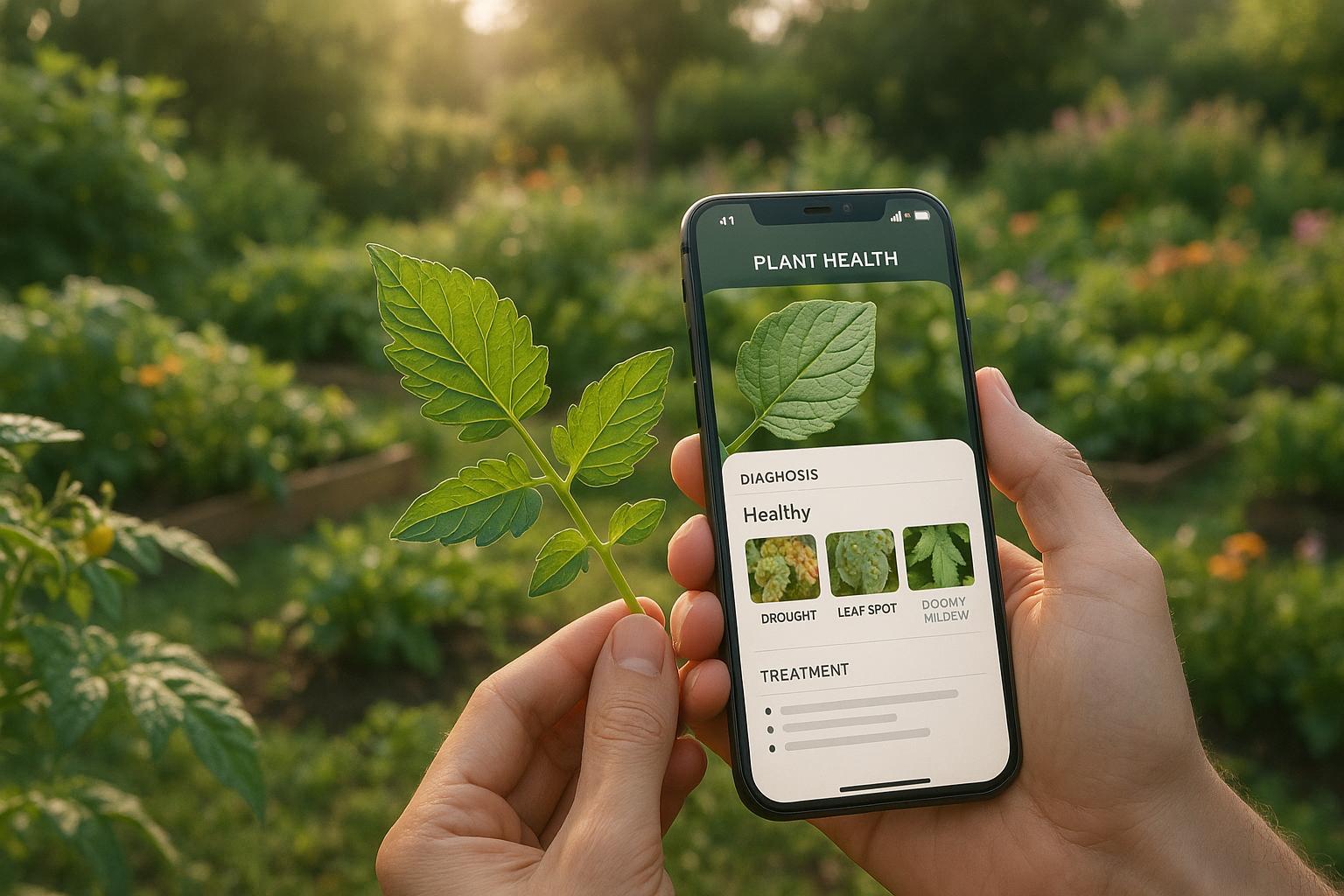
How AI Apps Predict Garden Diseases
AI gardening apps revolutionize plant care by enabling early disease detection, customized treatments, and proactive prevention strategies.
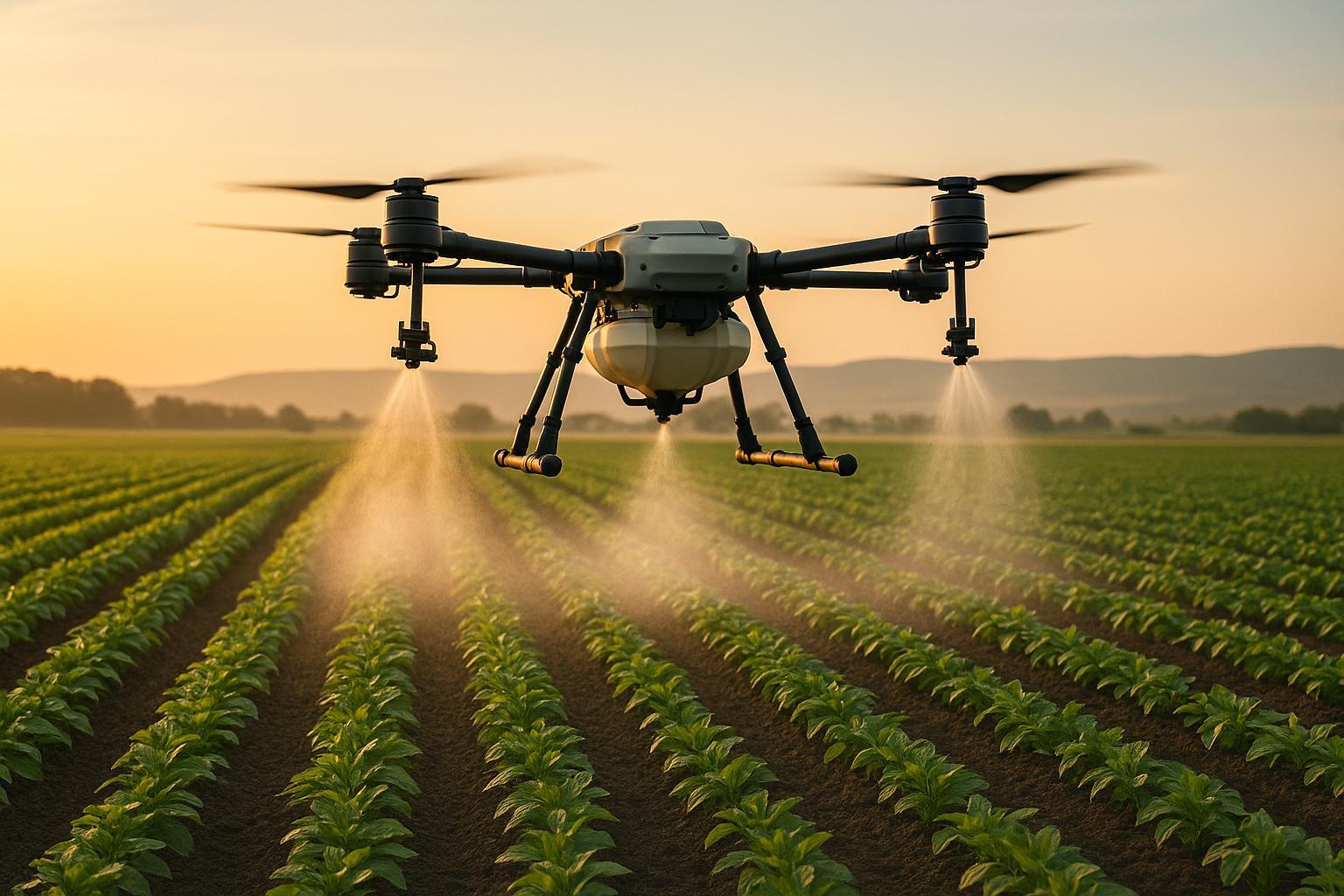
Precision Spraying: AI Drift Reduction Tips
Explore how AI technology enhances precision spraying in agriculture, reducing pesticide drift and improving efficiency for sustainable farming.
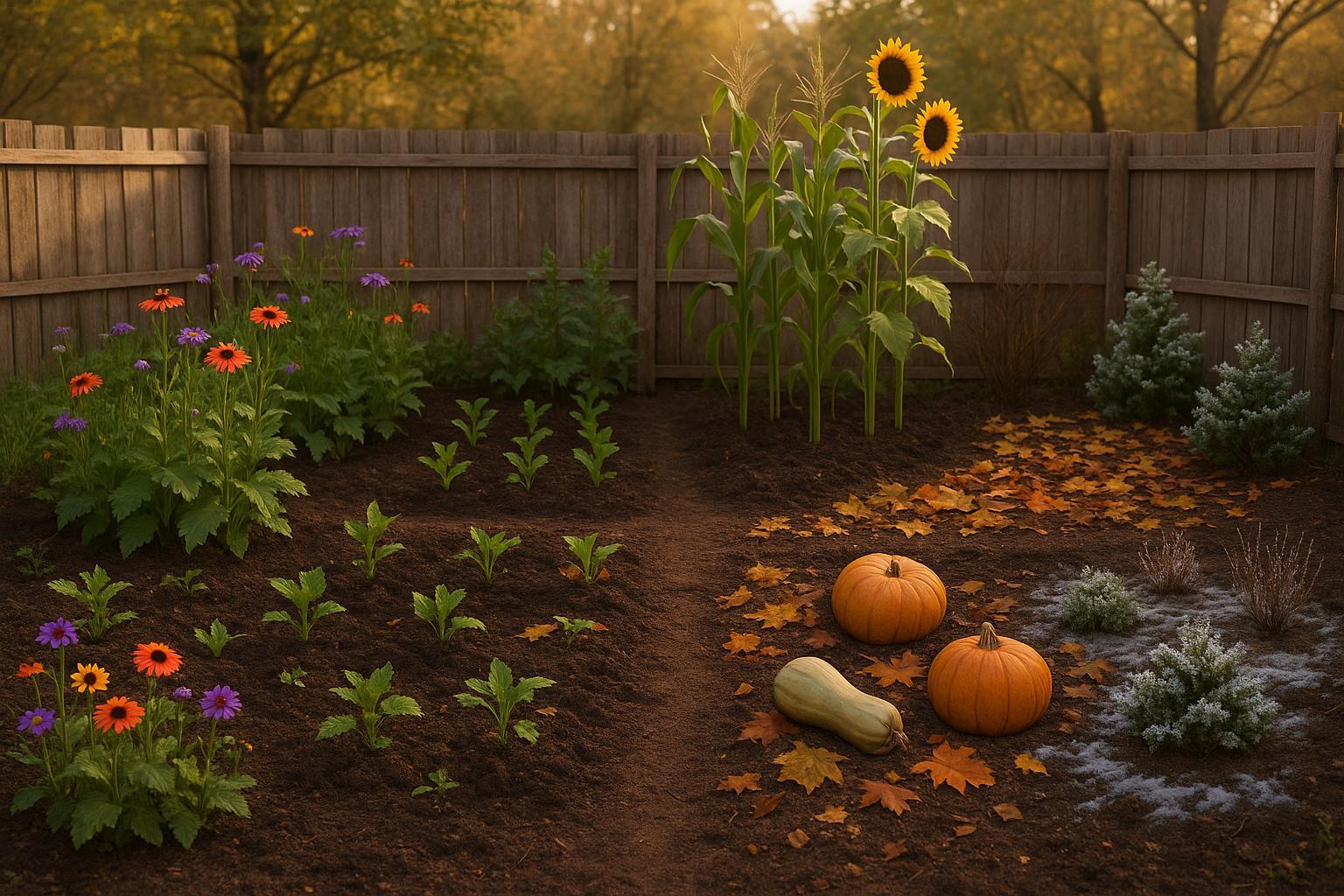
10 Indigenous Gardening Practices by Season
Explore Indigenous gardening practices that enhance plant health, conserve resources, and align with seasonal cycles for sustainable gardening.
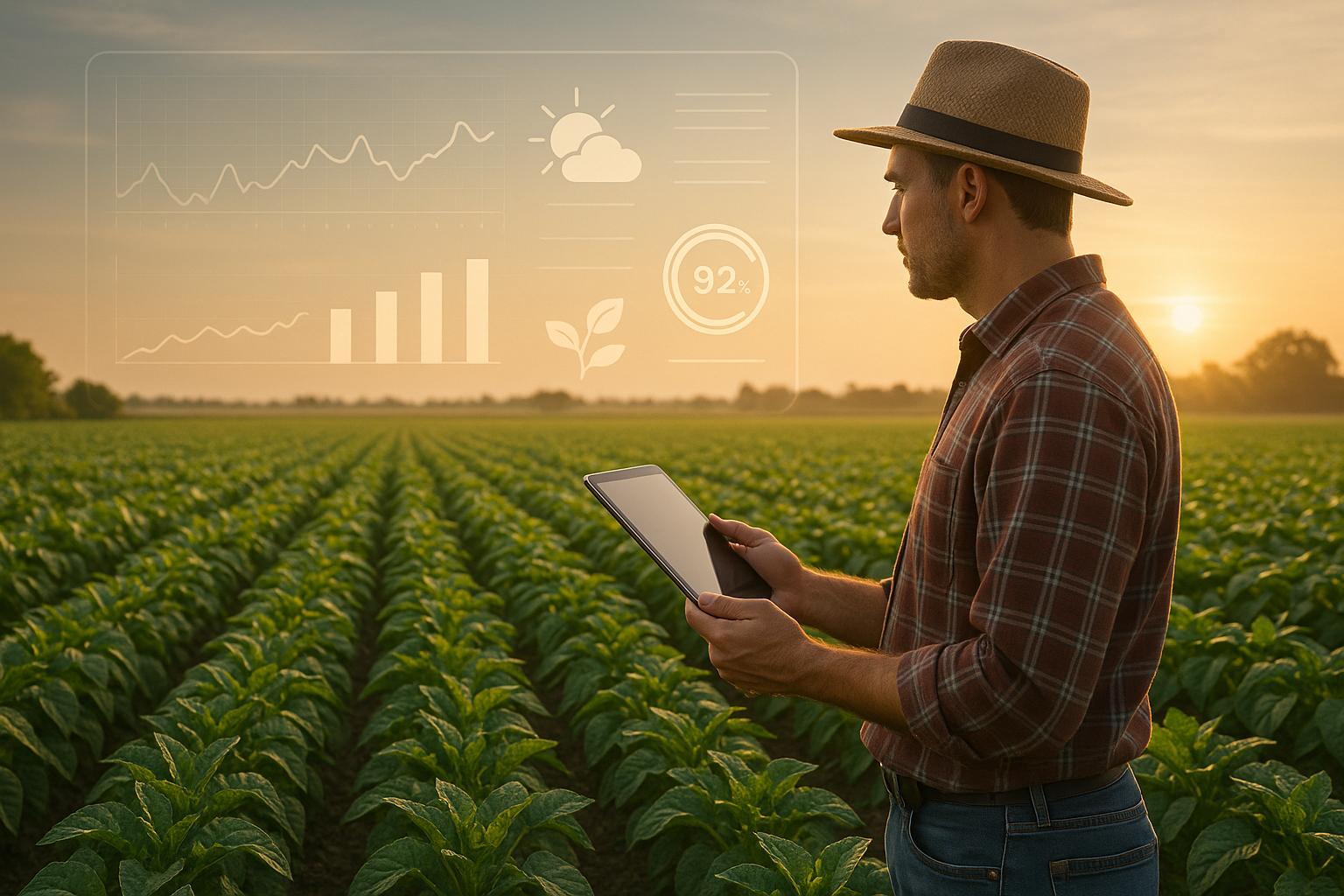
How Disease Prediction Models Reduce Crop Loss
AI-driven disease prediction models help farmers reduce crop losses, optimize resource use, and improve yields through early detection and actionable insights.
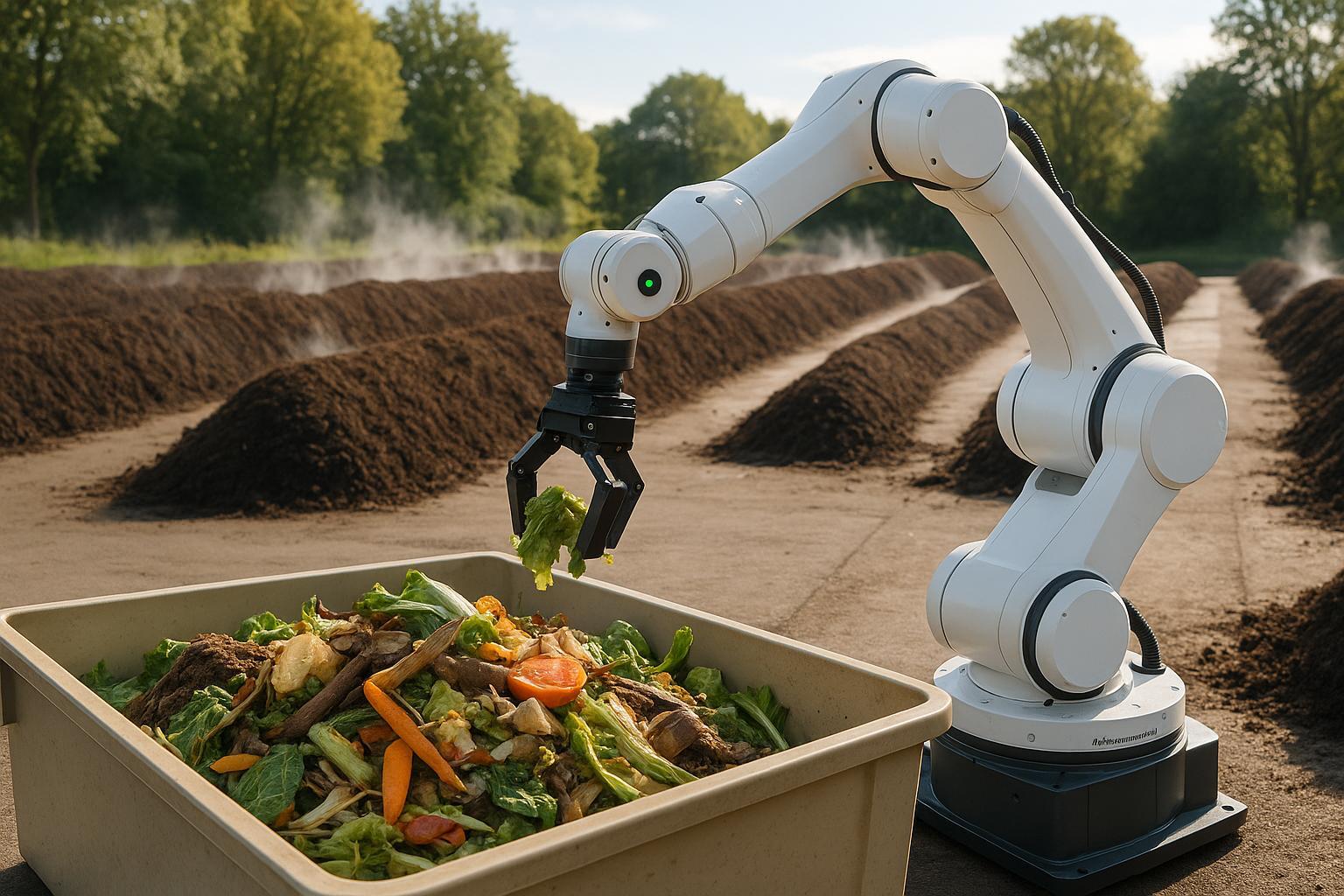
AI in Composting: Emission Control Insights
Explore how AI is revolutionizing composting by reducing emissions, enhancing sorting accuracy, and improving overall efficiency.
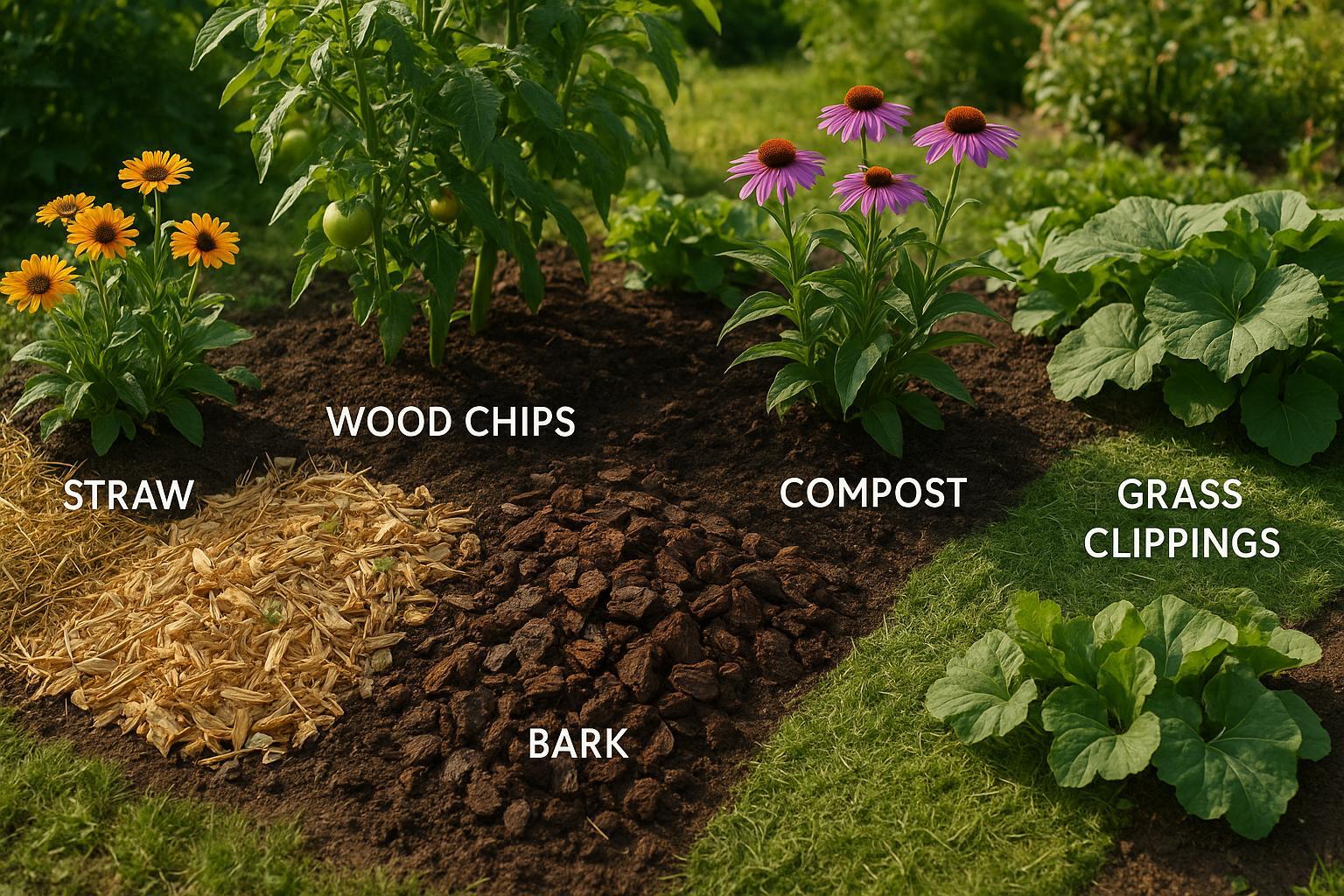
Top 5 Mulch Types for Sustainable Gardening
Explore the top 5 eco-friendly mulch types that enhance garden health, support plants, and promote sustainable gardening practices.